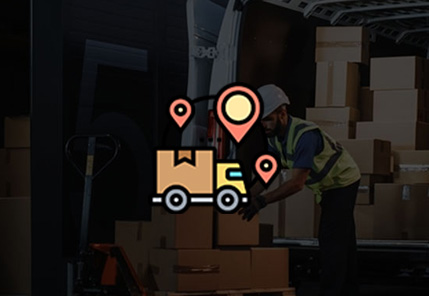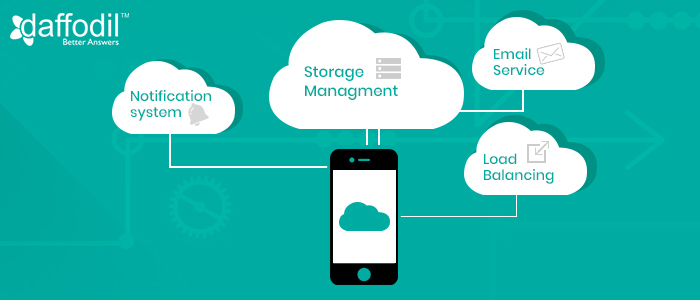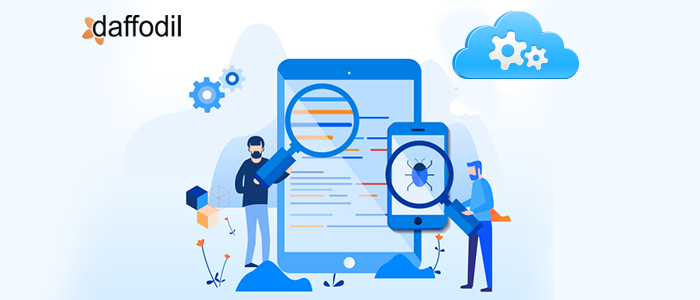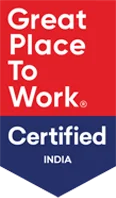Trusted by:
Why Cloud Native Applications Matter Now More Than Ever?
As dynamics of user behavior and competition are rapidly evolving, it is keeping organizations on their toes to continuously evolve their applications and meet user demands in a short period. Without specialized skills and the right technology expertise, this pressure to innovate can lead to disruptions, and force businesses to make hasty decisions. This may compromise quality, scalability, and security and can result in inefficiencies, costly downtime, and the risk of falling behind competitors.
Cloud native applications not only help you navigate these challenges effectively, but also provide strategic flexibility, agility, and best practices in integration and deployment. By leveraging cloud-based architectures, organizations can quickly scale their applications, optimize resource usage, and enhance resilience. These applications enable seamless integration with modern technologies like cloud based microservices, containers, and serverless computing, allowing businesses to deploy updates faster and respond to market changes with agility.

Scale Smart and Build Fast with our Cloud Native Development Services
Cloud Strategy Consulting
Developing cloud native applications requires an entirely new way of thinking about architecture and design. It is more of a cultural shift than a technology shift. Our cloud consultants can help you gain access to industry best practices, strategic insights, and a roadmap for developing or moving applications to native cloud.
Architecture Design Services
We help you design scalable, resilient, and efficient architecture for your cloud-native applications. We focus on modern, microservices-based architectures, leveraging the full power of cloud platforms like AWS, Azure, and Google Cloud to ensure your applications are optimized for performance and flexibility.
Cloud Native Application Development
Leverage astute expertise of our cloud native app developers to build, deploy and manage modern and hyper-scalable applications on the cloud. Our developers have extensive expertise in cloud native databases, security tools, and cloud native computing. This proficiency enables us to design and implement scalable, resilient, and portable applications that run seamlessly across different environments and cloud platforms.
Containerization and Orchestration
Build containerized applications with ease using tools like Docker, Apache Mesos, Amazon ECS, Nomad, Openshift, Google Cloud Run, Azure AKS, etc., and streamline your development and deployment. Our containerization and orchestration services make sure your applications are built to scale, run smoothly, and take full advantage of cloud infrastructure.
Serverless Application Development
Build and run your applications without the hassle of managing servers. Our serverless app development services let you focus on the code while we handle the rest. It’s all on-demand and event-driven, so you only pay for what you use. Plus, with a streamlined development and testing process, you can get your applications up and running faster.
Support and Monitoring Services
Our support and monitoring services provide complete end-to-end monitoring and observability using AWS CloudWatch, Azure Monitor, Google Cloud Operations Suite, Prometheus, Datadog, and other industry-leading tools. This means you can easily keep an eye on your applications’ performance and health, and ensure your applications are always running at their best.
Monolithic to Microservices Migration
Decompose your monolithic architecture into a flexible and scalable architecture with cloud based microservices. Develop and deploy components independently, boosting productivity and speeding up release cycles. We start with a thorough assessment of your current application and then create a tailored roadmap for a smooth transition.
Container as a Service
Easily deploy and manage your containerized applications without the hassle of underlying infrastructure. Our CaaS solutions help you focus on coding and innovation while we handle the complexities of container management. Enjoy the flexibility of developing in a portable environment, making migration between cloud providers a breeze.
Cloud Security and Risk Management
We help you safeguard your cloud infrastructure and data, ensure compliance, and minimize vulnerabilities. We employ industry-leading cloud based security tools like AWS Identity and Access Management (IAM), Azure Security Center, and Google Cloud Security Command Center to protect your assets. We also help you establish clear security policies and compliance protocols tailored to your business needs.
What makes us the go-to partner for cloud based application development?

Leverage complete potential of Cloud platforms with our strategic partnerships
Google Cloud Premier Partner
Get access to the latest cloud tools, faster issue resolution, and expert guidance on building scalable applications. Benefit from priority support, ensuring quick problem-solving and optimized performance.
AWS Advanced Tier Partner
Get priority support, technical training, and guidance from AWS architects, ensuring your cloud application is well-equipped to leverage the latest cloud technologies. You gain access to advanced tools and services, enabling faster development, deployment, and scaling of applications.
Microsoft Azure Solutions Partner
Get access to Microsoft’s robust ecosystem of tools and resources. With Azure’s extensive services like Azure Kubernetes Service (AKS) for container orchestration, Azure Functions for serverless computing, and Azure DevOps for CI/CD, you can streamline development and deployment processes.
Benefit from our frictionless application development process

Hire a team of experienced engineers with a niche skillset
Bringing you the perfect blend of cloud engineering experts, each mastering their craft to deliver innovative solutions tailored to your needs
-
Cloud Architects
-
UI/UX Experts
-
Business Analysts
-
Data Scientists
-
AI/ML Experts
-
Cloud Database Engineers
-
DevOps Engineers
-
Cloud Developers
-
Support Specialists
Business benefits with Daffodil’s application development services
Our customers have reported impressive business benefits from our cloud development services, including improved system performance, increased flexibility to adapt to changing business demands, and seamless integration with modern technologies for future growth.
-
lower development time
-
faster TTD
-
increased efficiency in release management
-
reduction in cloud cost
-
reduction in technical debt
-
faster product releases
Selected Projects in Cloud App Development

Daffodil helps Chalo to migrate to AWS cloud platform; resulting in 40% reduction in the cost of IT operations.
Read More >
Daffodil helps National Nutrition to migrate to AWS; resulting in 40% cost savings in infrastructure management
Read More >
Automating infrastructure provisioning for a maritime research firm leading to a significantly reduced cloud cost
Read More >Our Tool Set for Bespoke Application Development
AWS Toolset
AWS Lambda, Amazon Elastic Kubernetes Service (EKS), Amazon Elastic Container Service (ECS), AWS Fargate, AWS CloudFormation, Amazon API Gateway, Amazon RDS (Relational Database Service), Amazon DynamoDB, AWS CloudWatch, AWS CodePipeline, AWS CodeBuild, AWS CodeDeploy
Google Cloud Platform Toolset
Google Kubernetes Engine (GKE), Cloud Run, App Engine, Cloud Functions, Cloud Build, Cloud Storage, Cloud SQL, Firestore, BigQuery, Stackdriver (now part of Google Cloud Operations), Pub/Sub, Cloud Spanner
Microsoft Azure Toolset
Azure Functions, Azure Kubernetes Service (AKS), Azure Container Instances, Azure App Service, Azure DevOps, Azure Logic Apps, Azure Cosmos DB, Azure SQL Database, Azure Monitor, Azure API Management, Azure Service Fabric, Azure Blob Storage
Why Daffodil Software
Recognized excellence, proven customer satisfaction
Categorized as an aspirant in global PEAK Matrix assessment
Recommended vendor for custom software development services
Mentioned as a company to watch in the AI space
Categorized as a leader in digital engineering services
20+
years of software engineering excellence
150+
global clientele
4.8
Avg CSAT score
95%
customer retention rate





























